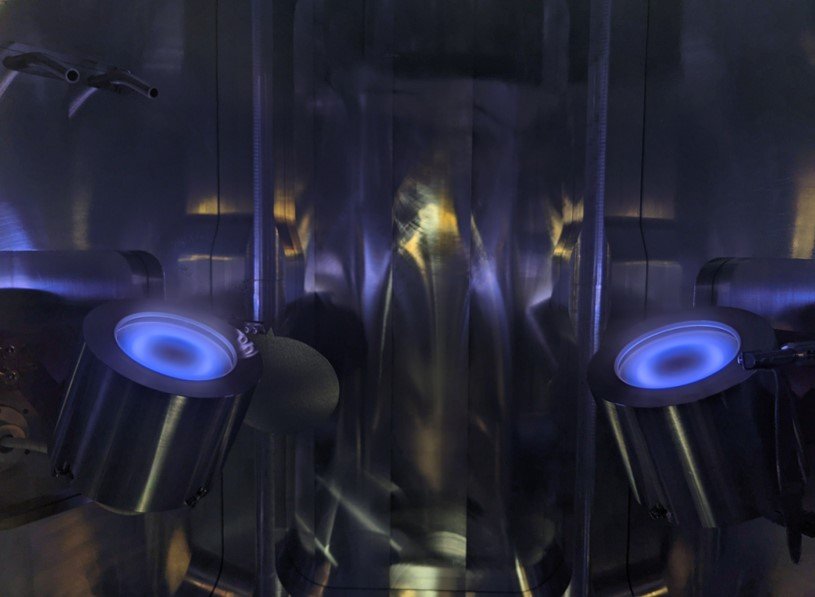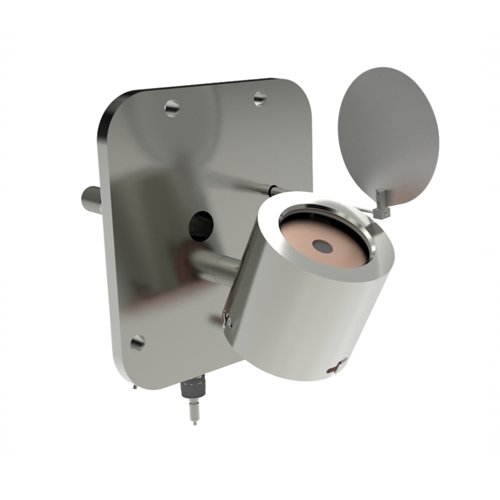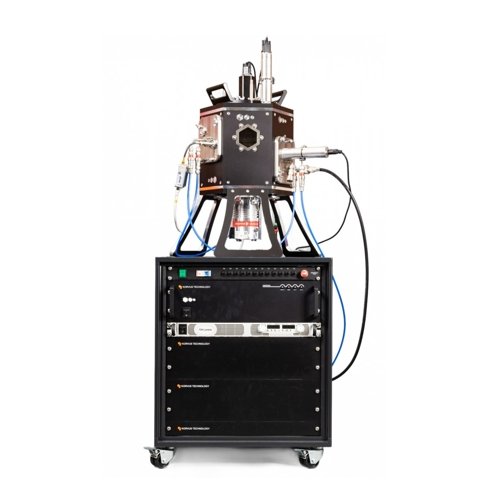
get a quote
In contrast to traditional PVD chambers, the open-frame architecture of the HEX gives users the freedom to reconfigure, upgrade and add their own instruments. So no matter which avenue scientific research calls you down, this system can get you there. With its uniquely modular architecture, the benchtop HEX series offers an unmatched level of user control, customization and upgradability to researchers in thin-film deposition.
HEX Series
The HEX platform offers an unmatched level of user control and customization, designed to incorporate the latest thin film technologies and performance into a bench top PVD system.In contrast to traditional PVD chambers, the open-frame architecture of the HEX gives users the freedom to reconfigure, upgrade and add their own instruments. So no matter which avenue scientific research calls you down, this system can get you there. With its uniquely modular architecture, the benchtop HEX series offers an unmatched level of user control, customization and upgradability to researchers in thin-film deposition.
Thin film deposition techniques
The HEX system is ideal for research and development due to its modular nature. All essential elements are accessible, allowing testing of various components and thorough exploration of the processes involved in several thin-film deposition techniques, including:
- Sample preparation for surface analysis
- Sputtering
- Thermal evaporation
- Organic physical vapor deposition
Supported methodologies in the base model include:
- Metal and photoresist lift-off process
- EM sample preparation
- New coating research and development
- Magnetron sputtering deposition optimization
Should your use case require additional functionality, the HEX system contains many other modules that expand the scope of the system for most thin film deposition processes.
Modular Design for Rapid Configuration
The HEX system consists of a six-sided aluminum-framed high-vacuum chamber that is lightweight yet rigid enough for most physical vapor deposition applications. The hexagonal structure supports six modular panels, including:
- Blank panel
- Viewport panel
- Deposition source panel
- PLD instrument process control panel including mass flow controllers and thickness control
- QCM panel for in-situ monitoring
The design uses standardized fittings, including Hamlet quick connects for the gas and water connections and wing nuts for sample stage and component attachments. This standardization makes it simple to switch out panels and adjust the system to a particular application. The modular design also makes maintenance and reconfiguration faster and more efficient.
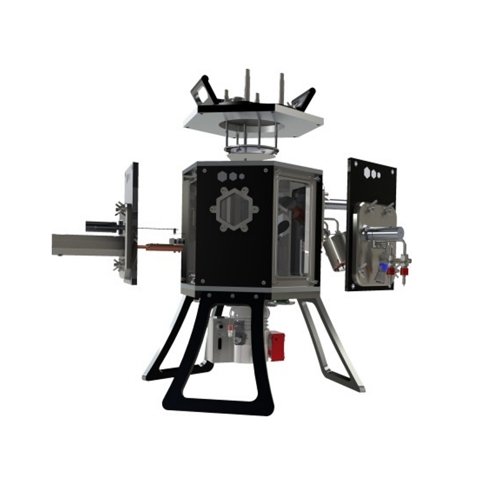
Applications
- Sample preparation
- R & D development of new coatings
- Electrical contacts
- Sputter deposition
- Teaching and training
- Lift-off
- Inert atmosphere – glove box integration
- Optical coatings
Options
The HEX’s ability to be quickly reconfigured at low additional expense allows the system to provide simple thin film training on a reproducible and recognizable platform for various deposition/coating techniques ranging from sample preparation for surface analysis to e-beam, sputtering, thermal, organics (for OLED research) and a range of other thin film deposition techniques. Reconfiguration includes RF & DC Sputtering, HiPims, PLD, E-Beam, Organic, and Thermal Evaporation. The chambers can also be integrated into a glovebox for research in an inert atmosphere and can be equipped with various in-situ measurement interfaces and high vacuum load locks, ensuring an extensive range of training options both in thin film deposition and sample analysis.All connectors/fixings on the system and the sources, including gas and water flow, are quick connects allowing for the elimination of most tools during system operation and sample/target changes. The system’s compact footprint and the option to have it either bench, rack or frame mounted make it an ideal size for any teaching environment and enables simple transfer to other laboratories/departments where necessary.
The HEX series is a truly modular system and therefore a wide range of accessories can be integrated when the initial system is configured, or simply ordered as an extra item at a later date, if and when the coating or research requirements change.
QCM – Deposition Thickness & Rate Monitors
Quartz Crystal Monitoring measures a mass variation per unit area by measuring the change in frequency of a quartz crystal resonator. The resonance is disturbed by the addition or removal of a small mass due to oxide growth/decay or film deposition at the surface of the acoustic resonator.
The HEX QCM enables the monitoring of deposition rate and thickness for all of the sources in the components range and is available in both manual and fully automated versions.

Sample, Viewport and Instrument Shutters
All the deposition components and sample stage options for the HEX series come with shutters in order to control the deposition of materials. They can be either manually operated or there is also the option of adding fully automated shutters to the system, enabling full system control from a laptop, using our custom software Niobium.
Some of the thin film system options are listed below, but please contact us if you have any specific requirements and we will be happy to design a configuration to suit your requirements.
System Panels
The HEX series has a wide range of side panel options for the customization of a deposition chamber such as
- Viewport panels – to assist in the monitoring of the deposition process
- Blank (chamber wall) panels
- Gas line panels – for introducing gas into the chamber for reactive thin film deposition or post deposition annealing.
- Instrument panels – for the attachment of the HEX range or deposition instruments.
- Bespoke top and bottom panels – enabling custom sample stage and pumping options.
The HEX QCM enables the monitoring of deposition rate and thickness for all of the sources in the components range and is available in both manual and fully automated versions.

Glovebox Integration
Due to the modular nature of the thin film systems within the HEX series, they can also be integrated into gloveboxes, allowing deposition in an inert atmosphere to eliminate the risk of oxidation to both the target material and the thin film samples.

In-Situ Measurement
All the systems in the HEX series can be equipped with a selection of in-situ measurement devices for applications such as
- Dual band optical monitoring for thickness measurement.
- Broadband optical monitoring for the analysis of transmission and reflection spectrums of deposited layers.
- Spectroscopic ellipsometry for thickness and composition analysis.
High Vacuum Load Locks
The HEX series HEX-L also has the option of incorporating a high vacuum load lock. This can be pumped down in under 10 minutes and allows samples to be introduced without breaking the vacuum of the systems main chamber.

Sources
TES: THERMAL EVAPORATIONThermal evaporation sources are generally used for basic thin film deposition processes. The evaporant material is placed in a conductive boat or alternatively a crucible held in a resistive coil. The boat or coil is heated by passing a high electrical current through it. As the temperature of the boat rises, the material in the boat begins to evaporate. The temperature, and hence the evaporation rate of the material, is controlled by the amount of applied current.
One important advantage of thermal evaporation is that no process gas is required so the process can be performed under very high vacuum conditions resulting in very few impurities being incorporated into the deposited films.
The single thermal boat source allows for the integration of a range of thermal boats for the deposition of both metals and organics/polymers.
The Korvus TES thermal boat sources allow quick removal of the sources to allow replenishment of the evaporant material. Boats and filaments can also be easily and rapidly replaced.
The TES sources are available as a single source per flange unit. Optionally, thermocouples may be mounted to monitor the boat temperature. Each source can be equipped with a manual or automatic shutter.
Multiple sources may be accommodated in one system. The sources can also be used in conjunction with other techniques such as sputtering, e-beam deposition and low-temperature sources.

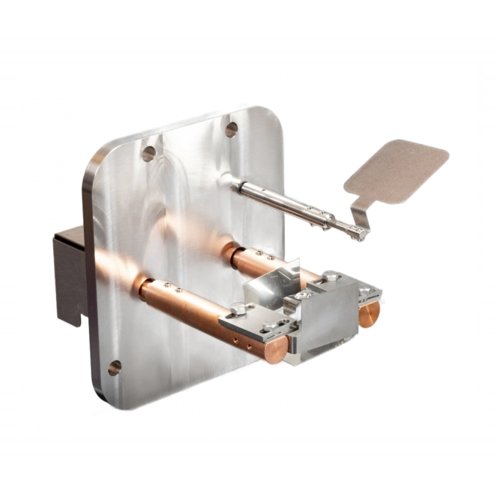
TAU E-Beam Evaporation Source
One of the significant drawbacks of traditional thermal evaporation is that it uses radiative heating, limiting the maximum evaporation temperature. Certain metals, such as tungsten, ruthenium, and niobium, have high melting points, low vapor pressures, and large bond energies between atoms, making them difficult to vaporize in a traditional thermal evaporation process.
Electron-beam evaporation alleviates this issue by using a direct, high-energy electron beam that heats the target material directly, without the need for a heating element. Not only does this allow for high material utilization efficiency, but it also allows for a broader range of source materials.
Our high-accuracy (sub-monolayer) mini E-beam evaporators are ideal for ultra-thin film deposition with reliable process control. Material can be evaporated from rods or material held in a crucible.
The TAU E-Beam evaporation source is a ‘mini’ source, meaning that it doesn’t use the beam-bending magnets found in other, larger electron beam evaporation sources. The TAU produces a high voltage at the target material while using the low voltage at the tungsten emission filament to produce a direct heating and evaporative effect.
One of the most significant concerns with the e-beam evaporation process is the heat generated during the vaporization stage. The TAU uses an enclosed head that reduces the thermal load in the vacuum chamber, allowing for coating at relatively low substrate temperatures. This reduced thermal energy makes the TAU a useful tool in lift-off processes and the coating of sensitive substrates.


Orca – Organic Evaporator
The evaporation of materials at low temperature (50-600oC) requires specialized sources which are specifically designed to operate in this range. Conventional evaporation sources are built in order to operate most efficiently at >1000oC which requires that conductive thermal losses are kept to a minimum. This has the consequence that the mechanism which allows accurate PID control relies almost entirely on radiative losses. At lower temperature, radiative losses are dramatically reduced and control loops in conventional cells suffer from overshoot and slow temperature change.
The ORCA organic deposition source is designed to operate between 50 and 600 C to allow sensitive organic materials to be evaporated with precise control.
The ORCA low-temperature evaporation source employs active cooling of the crucible to ensure that the heating process is balanced by a strong opposing cooling process which results in excellent temperature stability and control.
The crucible is constructed from high thermal-conductivity material, ensuring no hot-spots arise which could distort the evaporation rate. Optionally, alumina or graphite liners may be employed. The crucible (complete with liner if fitted) is easily removed/swapped without the need for any tools, although this is often not necessary since access to the source in order to refill the crucible is rapid and simple.
The K-type thermocouple is inserted into the body of the crucible, giving much more accurate readings than typical touch-contact arrangements. The source is supplied with a power unit coupled with a PID controller tuned to low-temperature operation.
The source may be used in conjunction with sputter sources, e-beam sources, thermal sources and others. Thermal crosstalk is kept to a minimum through the cooled shielding cap. The ORCA is also perfectly paired with our temperature gradient sample stage allowing precise temperature control of the substrate.

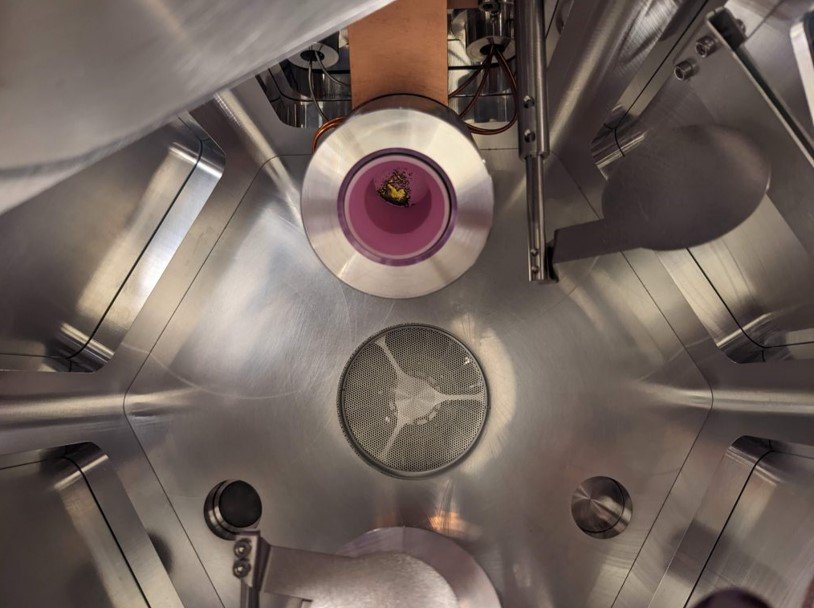

Fission Magnetron Sputtering System
Sputter deposition is a widely used thin film deposition. A plasma is ignited above a negatively biased ‘target’ which has the effect that ions are drawn from the plasma and accelerated towards the target material. On impact, the argon ions eject atoms/molecules from the surface – a process known as sputtering. The sputtered material forms a vapor, which can be re-condensed on a substrate to form a thin film coating.
The Fission series of magnetron sputtering systems allows users to switch between thin film DC/RF sputtering without specialized tools or lengthy downtime. The Fission deposition source is a module of the modular HEX system that uses quick-release connectors for cooling and water connections, making set-up simple and fast. The HEX system provides the framework for multiple physical vapor deposition techniques, including DC/RF sputtering.
The system accommodates reactive sputtering through the introduction of the reactive gas directly into the chamber or via a separate gas feed. We recommend using the separate feed to maintain the correct partial pressure of the reactive gas at the target.
The Fission series allows the sputtering of all solid metals, magnetic materials, insulators, and semiconductors and can even process multiple sources to grow a composite thin film.
The HEX system even supports high-power impulse magnetron sputtering (HiPIMS), resulting in the target molecules arriving at the substrate as ions instead of neutral atoms. The main advantage of HiPIMS is that it allows for excellent control over the film’s microstructure, phase composition, and optical properties.
